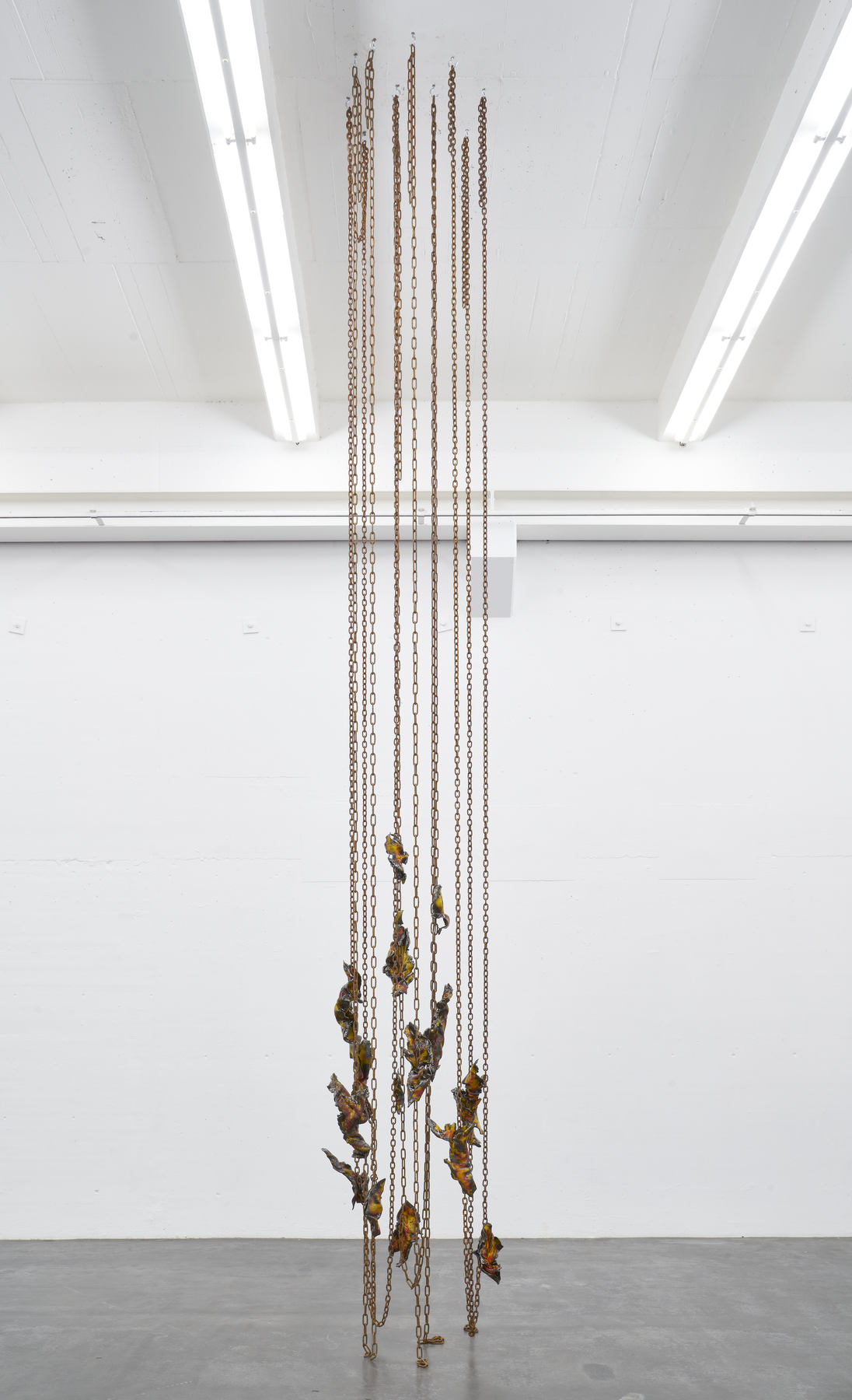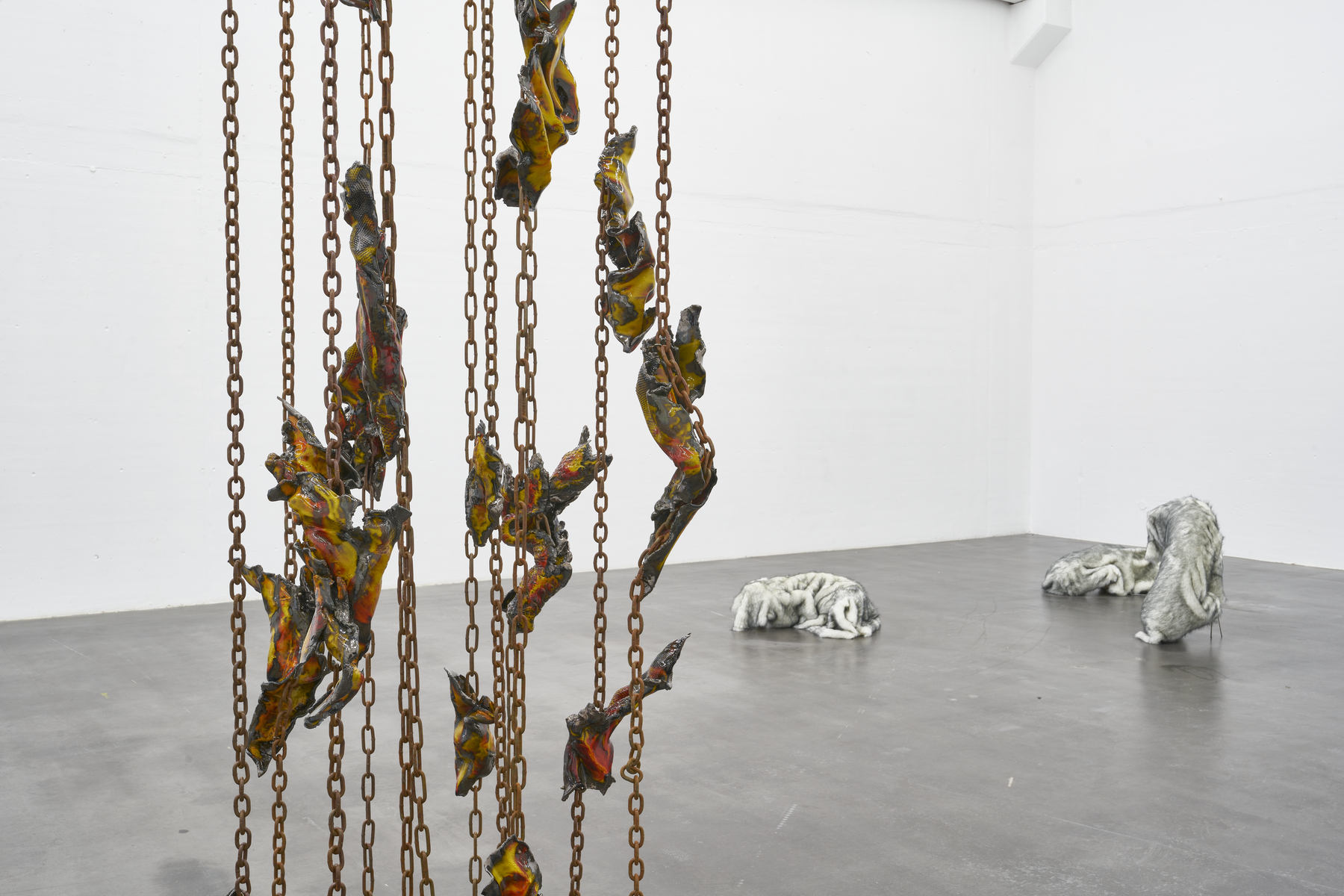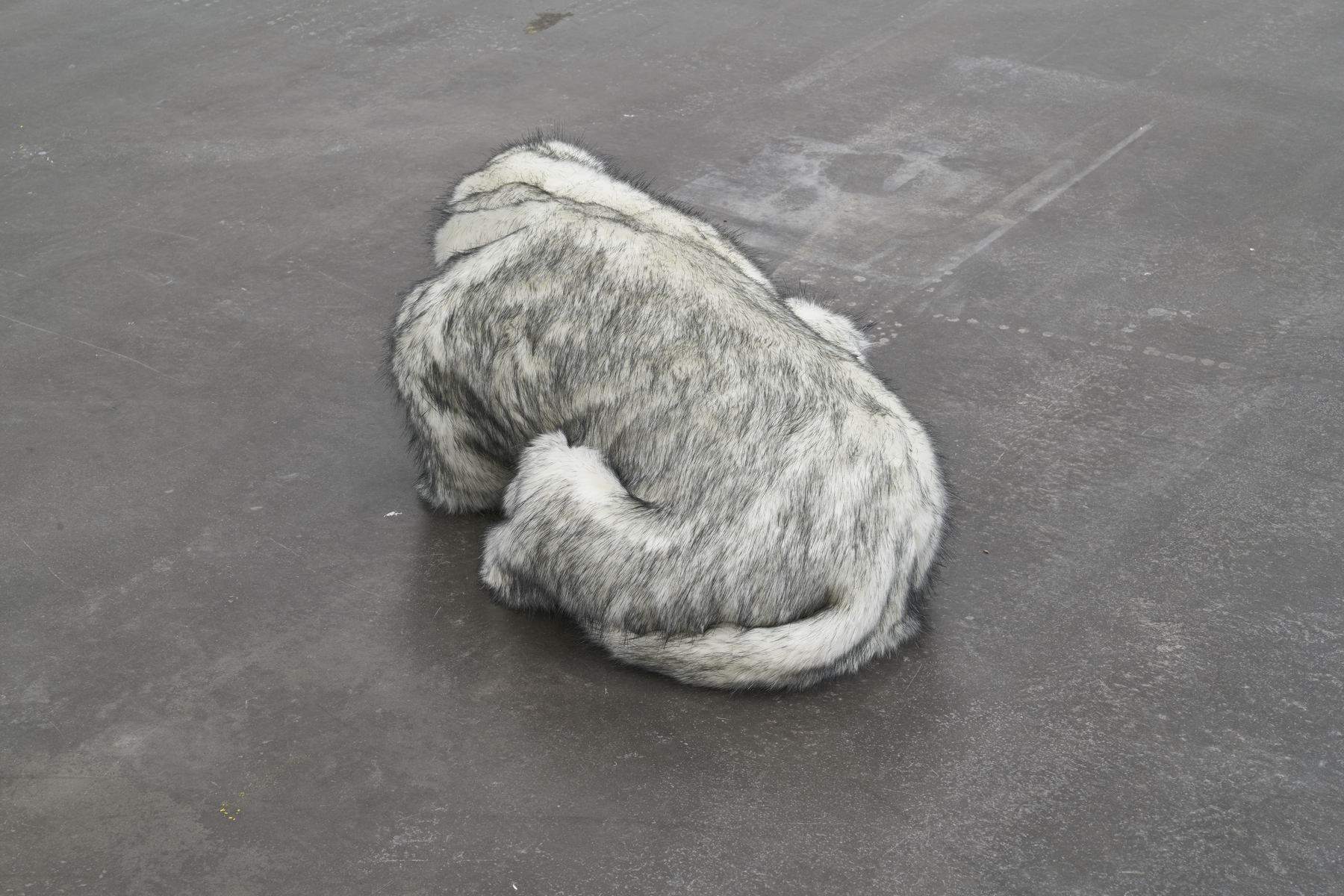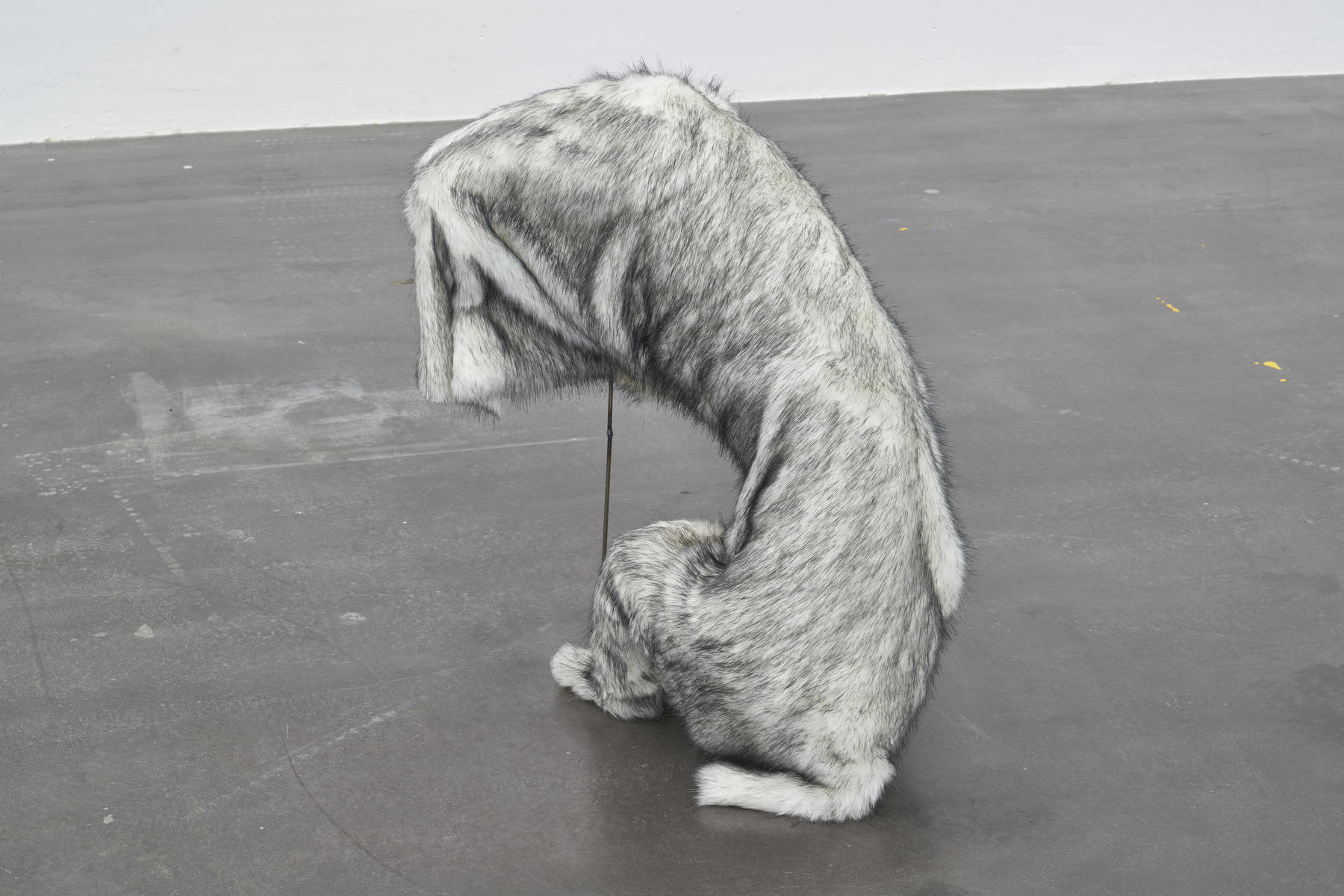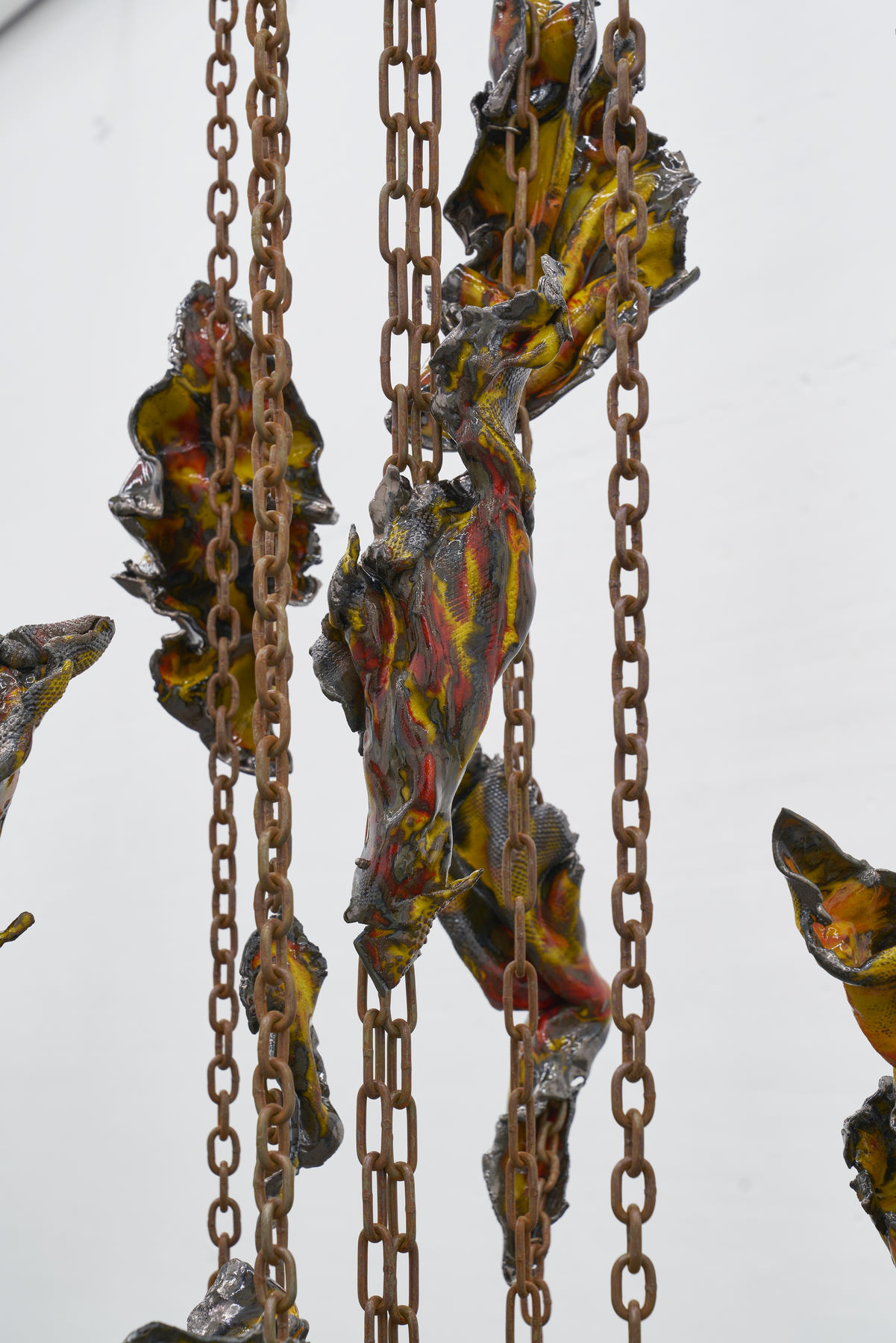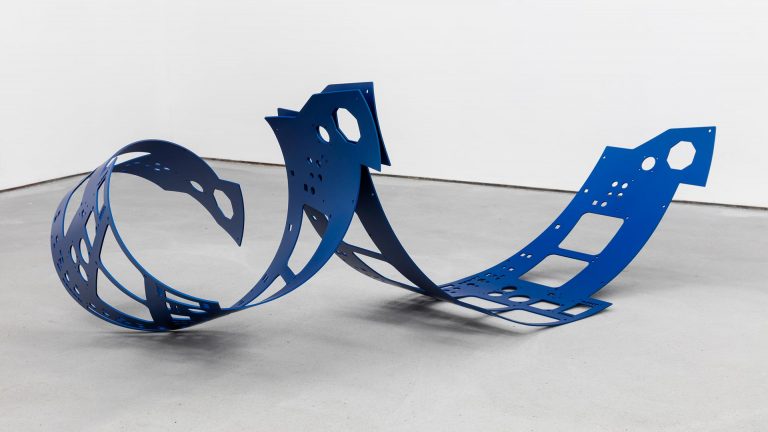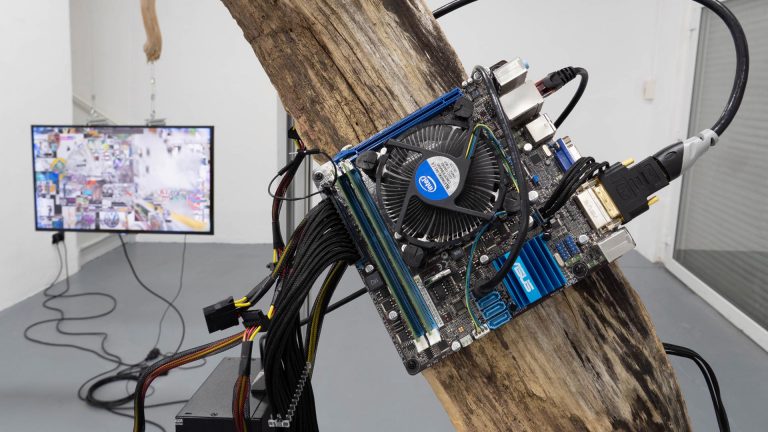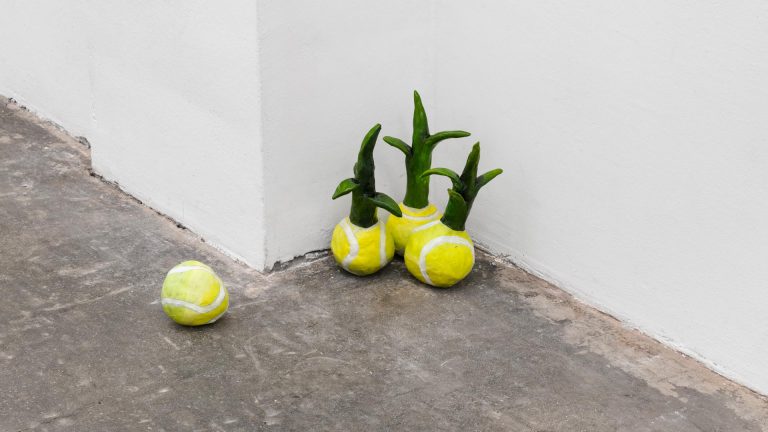Artist: Hanna-Maria Hammari
Exhibition title: Arms Race
Venue: Berthold Pott, Cologne, Germany
Date: November 16 – December 15, 2018
Photography: all images copyright and courtesy of the artist and Berthold Pott, Cologne
When I was invited to contribute a text for Hanna-Maria Hammari’s exhibition at Berthold Pott Gallery in Cologne, I did not expect to revisit some topics from this past summer (wolves and some philosophers). Contact was established by Pott, and I was able to ask a couple of initial questions. Luckily for me, one part of the installation which Hammari is presenting in her show, ‘Arms Race’, is a pack of wolves which made me very curious about where her interest sprouted from. In my case, it was the wolf’s migratory behaviour, wandering through Europe for hundreds of kilometres, establishing massive territories. They are not as threatening as folktales and movies would like us to believe. Their intimate group dynamics are fascinating and leave their positive impact on our ecosystem. In a beautiful and long e-mail, Hammari pointed out several aspects that she thought about while producing her artworks and some that only revealed themselves later, with a certain amount of distance. Her wolf pack is fascinating, just like a real one, and has been shown on two occasions in very different constellations, slightly shifting its context, and is the strongest when they can be a pack just by themselves. The individual wolf is made of a rough structure with fake fur draped over it, thus imitating an animal; but on closer inspection, the objects cannot keep up the illusion: Their idea disintegrates into an abstracted representation.
Let’s move to the philosophers for a second, in particular to Deleuze and Guattari. Their idea of the rhizome and the interconnectivity of individuals, society, thoughts and actions not only circles around itself, but is, for them, a valid explanation: We are always a multiplicity of everything. We thus have to try to be aware of something in order to recognise all the influences that are gathered inside of each of us. In a social construct, this could mean that each person is many things at once, and if people grasp this aspect’s exponential, it grows, offering the possibility of unity within an incoherent collection of multiplicity. This idea is relevant for a later epiphany Hammari had after showing the pack of wolves for the first time in the context of her graduation show at the MMK (Frankfurt am Main). She installed the objects in a lounge area, occupying the space where visitors are normally invited to rest. For her, the pack represented lingering hungry art students/fine art graduates. Whereas one might be harmless, a multiplicity of them could potentially be dangerous, or at least intimidating. Here again, she bridges an afterthought with another idea of Deleuze and Guattari: becoming a wolf. Artists move between social zones and constructs, never really belonging, always wandering the planes of (some sort of) discourse. In the end, they tend to lean toward isolation, although not alone, always in small groups and each carrying a multiplicity of various traits in his or herself, enriching but also threatening their natural environment. This gives them the outstanding advantage to observe the rest of society and allows them, in many cases, to react to social constructs and point out unlikely connections within the rhizome of humanity. This idea pushes the viewers of Hammari’s pack into the position to define themselves in relation to the pack and understand that they are part of a mass, no matter how many they might be. In the end, even a singular visitor would be, simply put, one of the pack and therefore everybody else.
Another remark that Hammari put out was comments on the potential realism and simultaneous abstraction of the work, which some have described to her as ‘unheimlich’ (uncanny). Understandably so, since they are incomplete figurations, or better put: a rough idea with a body that might make you believe you see real, resting animals. This uncanniness is infused in each of her pieces, something which speaks to the viewer, pretending to be complete, a realistic representation of an animal. We recognise the wolf, a romanticised predator in Hammari’s work, through the fragments of information she offers, but are misled by the preformed idea of what this animal should look like and what it could mean in our current situation. Right now, they are calm, but will they stay put?
Hammari’s two-part installation at the gallery not only consists of ambivalent animals, but also of an idea of a bonfire. The ceramic objects hanging on heavy-duty chains from the ceiling of the space are another play on exactly this: ambivalence. Each piece of fired clay has a dark, glossy base coat with lambent flames painted on them and seems to come alive while swinging around, but essentially staying still. Fire, as an overloaded signifier in myths, history and rituals, is often the epitome of destruction, life or cleansing and purification. The latter seems to be closest to Hammari’s sculptural approach, since ancient Romans and Greeks used fire to purify (Lustratio), for example, their newly born; similar to Catholic baptism, the idea was that it would burn away bad influences. While we walk around the artist’s bonfire, we begin to wonder about the representation of heat, trapped in the ceramics, a subtle joke on the ceramic material itself. After all, just like the philosophical rhizome, everything in her practice is connected through its matter.
-Patrick C. Haas
Hanna-Maria Hammari was born 1986 in Tornio, Finland. She studied at Städel-Schule Frankfurt (2011-2017) and Cooper Union, New York (2016). She gratuated at Tobias Rehberger class, Frankfurt am Main in 2017. Main Solo Exhibitions: Studio Picknick, Berlin, August 2018, Berthold Pott, Cologne (Nov./Dec. 2018), upcoming: Kunsthalle Baden-Baden (Nov. 2018- Jan 2019); Main Group Exhibitions: Graduation Show, Museum für Moderne Kunst, Frankfurt am Main (2017), Gillmeier Rech, Berlin (2018), Gussglashalle, Berlin (2018)
Hanna-Maria Hammari, Arms Race, 2018, exhibition view, Berthold Pott, Cologne
Hanna-Maria Hammari, Arms Race, 2018, exhibition view, Berthold Pott, Cologne
Hanna-Maria Hammari, Arms Race, 2018, exhibition view, Berthold Pott, Cologne
Hanna-Maria Hammari, Arms Race, 2018, exhibition view, Berthold Pott, Cologne
Hanna-Maria Hammari, Arms Race, 2018, exhibition view, Berthold Pott, Cologne
Hanna-Maria Hammari, Pack of Wolves, 2017, fake fur, steel, chicken wire, dimension variable
Hanna-Maria Hammari, Pack of Wolves, 2017, fake fur, steel, chicken wire, dimension variable
Hanna-Maria Hammari, Pack of Wolves, 2017, fake fur, steel, chicken wire, dimension variable
Hanna-Maria Hammari, Pack of Wolves, 2017, fake fur, steel, chicken wire, dimension variable
Hanna-Maria Hammari, Pack of Wolves, 2017, fake fur, steel, chicken wire, dimension variable
Hanna-Maria Hammari, Bonfire, 2018, rusted steel, glazed ceramic, ca 570 x 80 x 80 cm
Hanna-Maria Hammari, Bonfire, 2018, rusted steel, glazed ceramic, ca 570 x 80 x 80 cm
Hanna-Maria Hammari, Bonfire, 2018, rusted steel, glazed ceramic, ca 570 x 80 x 80 cm

